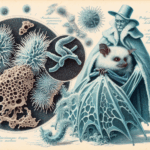An invisible hand guiding objects across the water? Not science fiction anymore. A team of researchers, led in part by Nanyang Technological University, Singapore, has cracked the code on manipulating water waves to precisely control floating objects.
Their trick? Generating and merging waves to create bizarre surface patterns—twisting loops, swirling vortices, and other hypnotic designs. These patterns don’t just look cool; they actually pull in nearby objects and trap them in place, defying the usual chaos of water movement.
Some act like tweezers, holding floating debris motionless against external disturbances. Others spin objects in place or direct them along circular and spiral paths, like tiny ships caught in an invisible current. Unlike ordinary ripples, these waves stay stable, even when the water is disturbed, making them eerily effective.
Yes, this is real. No, it’s not magic. But it sure looks like it. These researchers are using physics to sculpt water waves the way sci-fi characters manipulate the void. And the results could change everything from environmental cleanup to maritime navigation.
Published in *Nature* (because where else would a breakthrough like this belong?), this technique could someday be weaponized for good—say, containing oil spills more efficiently by corralling the slick into a tidy, easy-to-collect patch. Or, on a grander scale, guiding entire vessels without engines, steering them purely through the push and pull of engineered waves.
Assistant Professor Shen Yijie, one of the minds behind this eerie new ability, sees this discovery as just the beginning. His team has proven that waves can wrangle objects as small as grains of rice, but why stop there? If this principle scales, it could manipulate elements far smaller—like cells—or much larger, like a boat drifting off-course.
The inspiration? Light. Before bending water to his will, Asst. Prof. Shen worked on shaping light waves into intricate patterns that could trap and move particles, including metal nanoparticles and yeast cells. Those light-based structures resisted disruption and allowed precise control over microscopic objects—so why not try the same with water?
Turns out, it works. Water waves, just like light waves, can be shaped into robust, stable patterns that exert real influence over their surroundings. This cross-disciplinary approach—stealing tricks from optics and applying them to hydrodynamics—could open up entirely new, unexpected applications.
What’s next? The possibilities are unsettlingly vast. What if maritime cargo could be directed purely by wave manipulation, eliminating the need for tugboats? Could advanced versions of this technique make water itself a medium for transportation, shifting objects effortlessly without mechanical intervention?
If nothing else, we now live in a world where tractor beams exist, albeit on a liquid surface. The future is here—and it’s making waves.
Five Fast Facts
- Singapore, home to NTU, is the world’s busiest transshipment port, handling over 37 million containers annually.
- Light waves and water waves both obey the principles of wave interference, a phenomenon first mathematically described by Thomas Young in 1801.
- The concept of a “tractor beam” originated in a 1931 sci-fi story by E.E. Smith, decades before it became a staple of spacefaring franchises.
- Oil spills have caused environmental disasters for decades, with the Deepwater Horizon spill in 2010 releasing over 200 million gallons into the Gulf of Mexico.
- Researchers have successfully used structured light waves to trap and move living cells, a technique already being explored in biomedical science.





